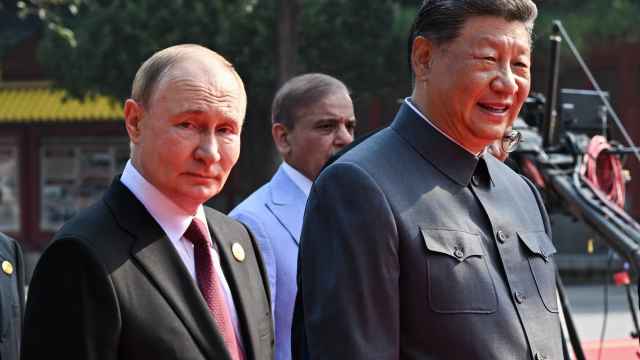Вырезка: tenderloin, fillet
As the days grow shorter and colder in Moscow, ambitious — or bored — expats often venture into the world of culinary experimentation. Burning with foodie ardor and armed with a two-page shopping list, off they go to the market. All is well until they approach the meat counter.
They stare at the display. Nothing on the counter looks like the picture they saw in the cookbook, and they have no idea how to ask for the cut that they want. I've been there. In fact, I've spent years at that meat counter, describing, gesturing, pointing and doing interpretive dances. I finally began to carry a printout of a butcher's chart. The vendors — highly amused — started to scribble in the Russian names. I can't always get the exact cut I want, since Russian butchers, like butchers all over the world, have traditional cuts that differ from what I grew up with. But at least I know what part of the cow I want.
The first thing that might throw off the Western cook is шейка (neck), which is not in most English-language cookbooks. The part of the cow that Russians calls шея (neck), лопатка (shoulder blade) and плечевая часть (shoulder) is called "chuck" in U.S. butcher-shop diagrams and recipes. If you want a shoulder roast (aka clod or English steak), ask for заплечная мякоть. If your recipe calls for chuck, try asking for вырезка из лопаточной части (literally shoulder fillet).
On the cow, the brisket is located under the chuck, although sometimes in butcher's charts the belly of the cow from stem to stern is called the breast and flank. Russians call the brisket грудинка. Диафрагма (literally diaphragm, midriff) is the skirt: тонкая диафрагма (thin skirt steak) and мясистая часть диафрагмы (skirt steak). Further back is пашина, what English speakers call a flank steak.
Up on top along the back of the beast is the good stuff; the most tender cuts of meat. Russians call this толстый край (literally thick side) — what U.S. butcher charts call "ribs" — and тонкий край (literally thin side) — what the charts call "loin." If you want a standing rib roast (aka prime ribs), ask for отруб из задних ребер с костью (literally cut with the back ribs, bone in). Вырезка (tenderloin) will get you that long, tender strip from the center of the cow — and will also empty your purse. Филейный край (fillet side) produces a variety of sirloin steaks (aka striploin). Further back is the round, a nice word for the rump. If you want the eye of the round, ask for щуп. Огузок is the topside.
If you get lost or confused as the butcher rattles off names for various cuts, try to listen for certain key words. The word вырезка (fillet, tenderloin) should be your new best friend because it always denotes a prime cut. In everyday parlance at the meat counter, мякоть (literally "flesh") means "without bones" and often "tender meat." Бифштекс (beef steak) and the adjective бифштексный — usually бифштексная часть (literally "steak part") — also mean a tender piece of meat. If you can't remember what cut of meat you want, just tell the butcher what you want it for: для тушения (stewing), котлеток (minced meat, hamburgers), жарки (frying), шашлыка (shashlik), гриля (for the grill).
And if all else fails, forget the roast beef and buy a chicken instead.
Michele A. Berdy, a Moscow-based translator and interpreter, is author of "The Russian Word's Worth" (Glas), a collection of her columns.
A Message from The Moscow Times:
Dear readers,
We are facing unprecedented challenges. Russia's Prosecutor General's Office has designated The Moscow Times as an "undesirable" organization, criminalizing our work and putting our staff at risk of prosecution. This follows our earlier unjust labeling as a "foreign agent."
These actions are direct attempts to silence independent journalism in Russia. The authorities claim our work "discredits the decisions of the Russian leadership." We see things differently: we strive to provide accurate, unbiased reporting on Russia.
We, the journalists of The Moscow Times, refuse to be silenced. But to continue our work, we need your help.
Your support, no matter how small, makes a world of difference. If you can, please support us monthly starting from just $2. It's quick to set up, and every contribution makes a significant impact.
By supporting The Moscow Times, you're defending open, independent journalism in the face of repression. Thank you for standing with us.
Remind me later.







